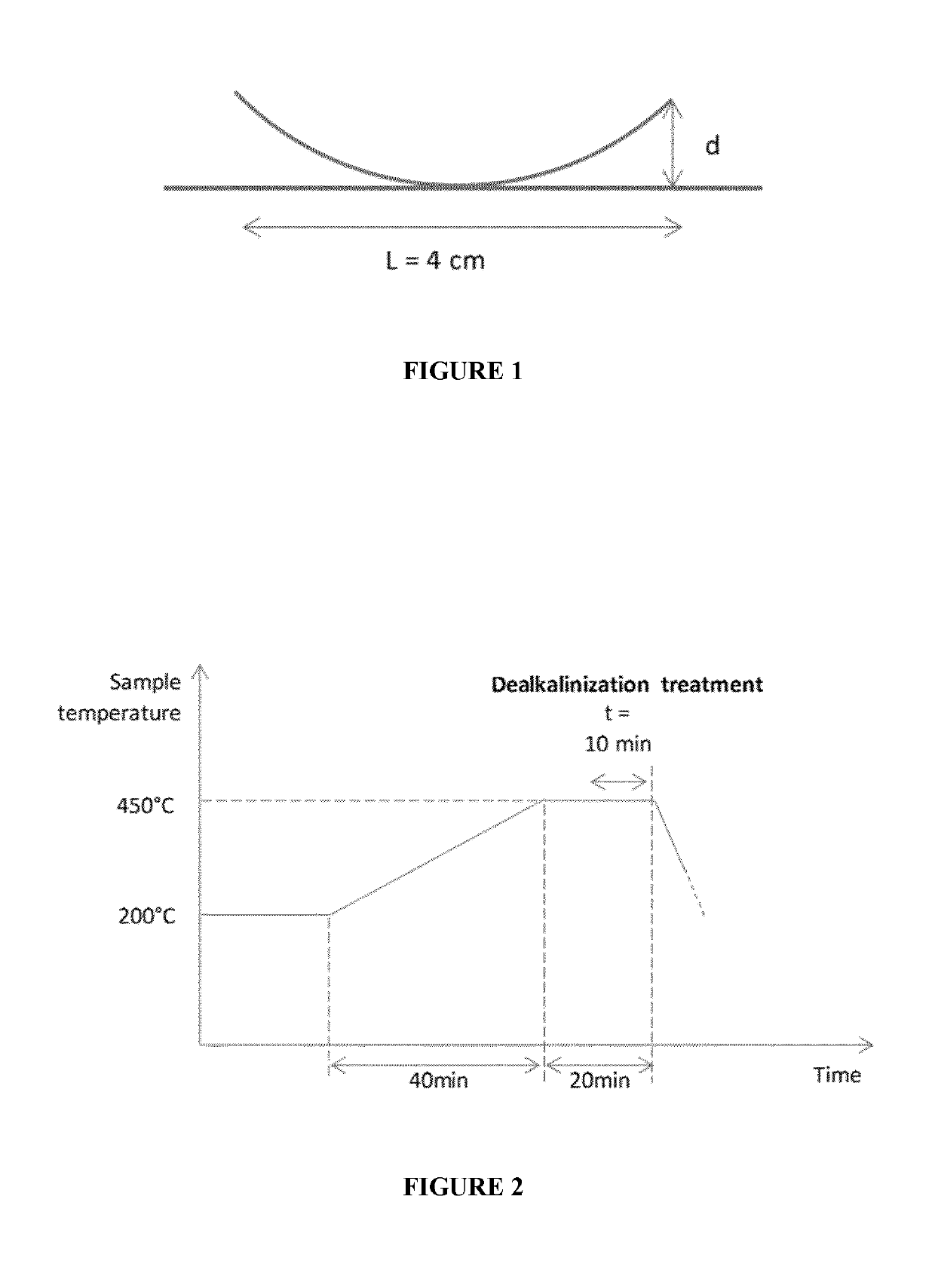Glass sheet capable of having controlled warping through chemical strengthening
a technology of chemical strengthening and glass sheet, applied in the field of improved glass sheet, can solve the problems of increasing the density of glass, reducing the strengthening effect, and forming reams, and achieve the effect of reducing or even no warping effect and excellent surface creation
- Summary
- Abstract
- Description
- Claims
- Application Information
AI Technical Summary
Benefits of technology
Problems solved by technology
Method used
Image
Examples
case 1
[0163 in table 3 shows the evolution of the warpage when face 1 is treated by a dealkalization and face 2 is as such (untreated). Such a case mimics an industrial case in which the glass sheet is produced by the float process but wherein the “tin face” has been polished (face 2) and the “air face” has been treated by a dealkalization treatment (face 1), prior to tempering. One can observe the variation of the warpage while applying different time of dealkalinization treatment, thereby modifying the Na2O available content, on the treated face 1 versus the non-treated face 2.
case 2
[0164 in table 3 shows the evolution of the warpage when face 1 is treated by a dealkalization and face 2 is untreated but corresponds to a simulated “tin face” coming from a float process. Such a case mimics an industrial case in which the glass sheet is produced by the float process (face 2 is “tin face”) and the “air face” has been treated by a dealkalization treatment (face 1), prior to tempering. In reference conditions, the ratio Na2O air / tin is 1.03. Also, the CS level is classically 9% higher on tin face than on air face and DOL is 17% lower on tin face than on air face. This allows for each composition kind to establish a reference tin face. From the results, one can clearly observe the presence of a significant warpage for examples 5-6 and comparative example 1 while no warpage treatment is applied (duration=0). Next, one can also observe that the initial warpage can be controlled / modified / suppressed by controlling the amount of Na2O in the air face versus in the tin face,...
PUM
| Property | Measurement | Unit |
|---|---|---|
| thickness | aaaaa | aaaaa |
| surface compressive stress | aaaaa | aaaaa |
| thickness | aaaaa | aaaaa |
Abstract
Description
Claims
Application Information
 Login to View More
Login to View More - R&D
- Intellectual Property
- Life Sciences
- Materials
- Tech Scout
- Unparalleled Data Quality
- Higher Quality Content
- 60% Fewer Hallucinations
Browse by: Latest US Patents, China's latest patents, Technical Efficacy Thesaurus, Application Domain, Technology Topic, Popular Technical Reports.
© 2025 PatSnap. All rights reserved.Legal|Privacy policy|Modern Slavery Act Transparency Statement|Sitemap|About US| Contact US: help@patsnap.com

